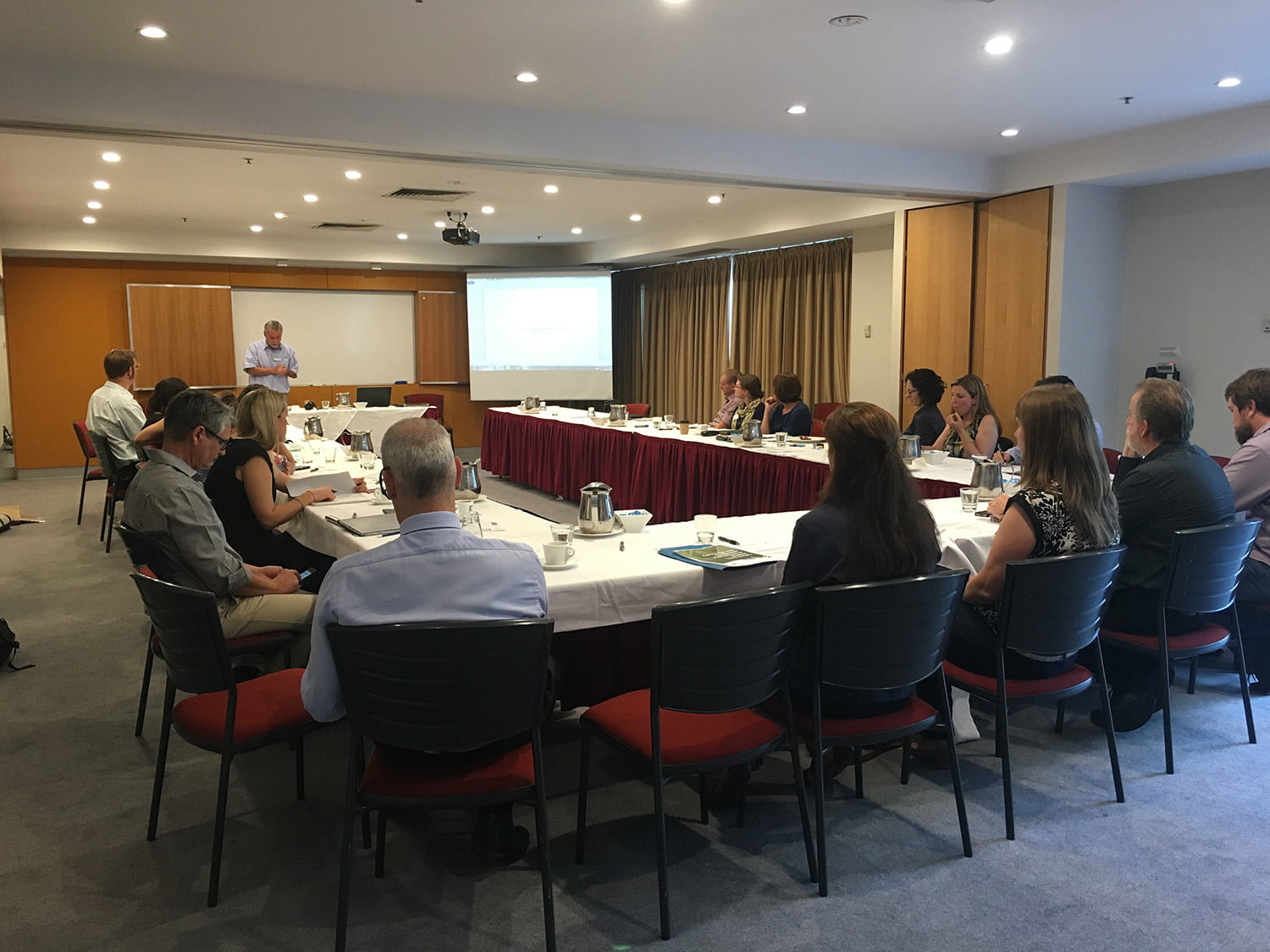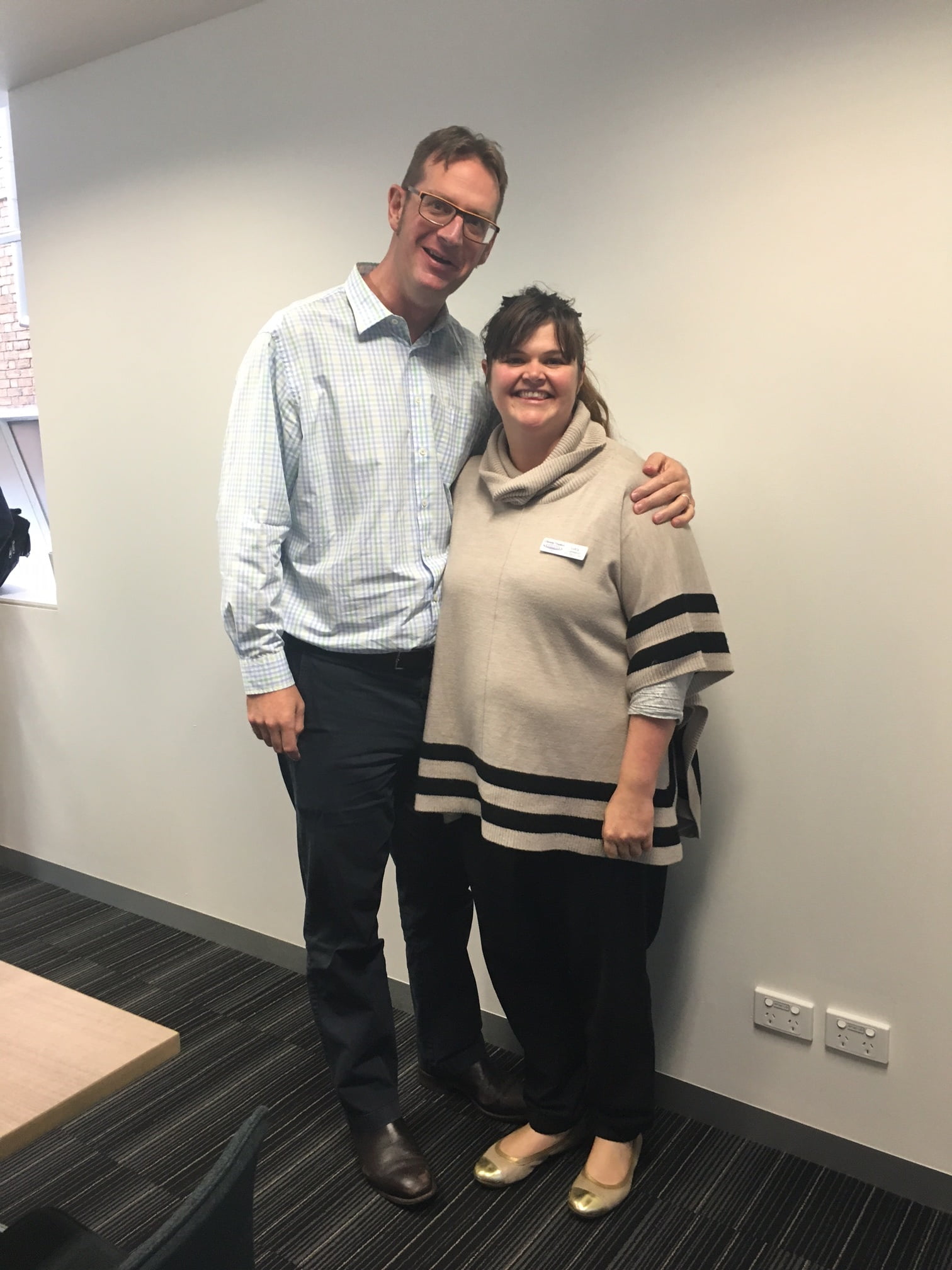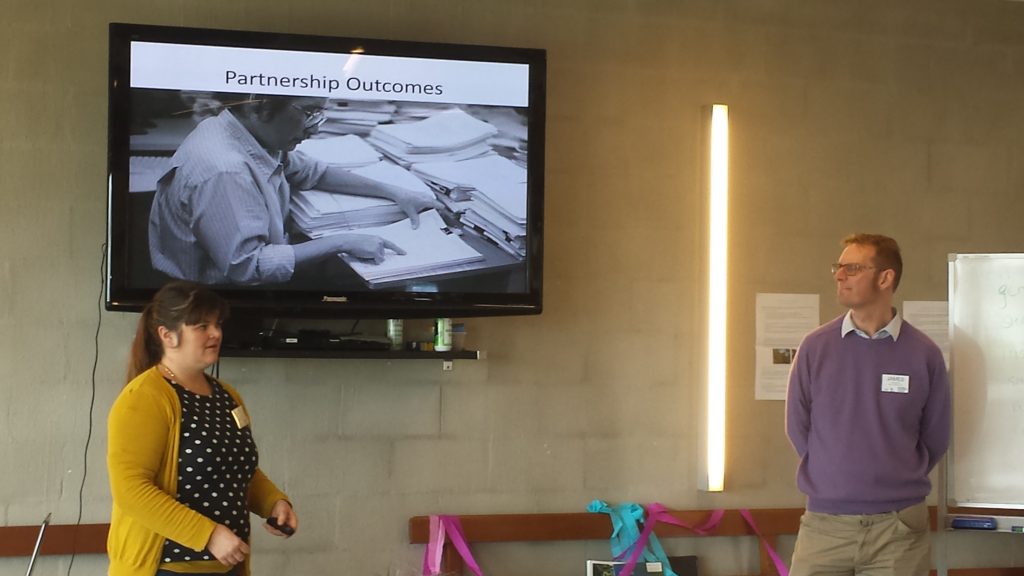Twinning Partnership:
James Shaddick – North Central Catchment Management Authority & Lucy Cameron – Glenelg Hopkins Catchment Management Authority
This project focused on their shared roles implementing monitoring, evaluation, reporting and improvement (MERI) in their organisations. It is often the case that those who work in the CMAs on MERI are quite isolated from the day-to-day workings of their wider team, yet an organisation can ‘rise’ or ‘fall’ based on what their MERI reveals.
our goals were to:
- Learn from each other about the approaches and techniques used in each CMAs MERI.
- Support each other and be a ‘sounding board’ for ideas, challenges and opportunities.
- Bring other people working on MERI together to share experiences and optimise statewide MERI outcomes.
Our actions:
- We committed to regular catch-ups by phone and email to discuss issues and share ideas. Through these conversations we established that good MERI practice is a combination of having good procedures supported by appropriate tools and enough resourcing, but is also about finding ways of making MERI relevant to staff, getting them care about the legacy of their projects and in doing so, to take ownership of MERI within their projects.
- We ran a meeting – the inaugural (hopefully) Victorian Waterway Management ‘Show n Tell’ which most of the CMAs attended. The workshop included a number of presentations on examples of good MERI. The day’s discussions concluded with a small number of dot points for ongoing action and suggestions for improving cross-CMA and state-wide MERI. As we had managed to sneak our session onto the agenda for a state-wide forum (the Regional Investment Coordinators), which has recently had MERI placed on its work plan, the paper went to the CEOs forum for consideration.
- Building on the state-wide workshop, we will continue to encourage a state-wide discussion clarifying roles and responsibilities around MERI. Lucy has a great metaphor for MERI – that it’s like an onion, with lots of layers, this is why we chose the onion as the visual representation of our project.
- A recent strategy developed by the CMA CEOs and DEWLP, based on recommendations from the 2014 VAGO Audit on CMAs contained similar approach to those that had been discussed at our session and will provide both funding and mandate for ongoing action.

Program’s Learnings
MERI is like an onion, it has lots of layers. Having a clearer picture of what each layer should look like and who is responsible for collecting and/or analysing the appropriate data will make the whole process simpler, more transparent and owned by people – making telling the story much easier.
Program’s legacy
- This Twinning partnership provided the support and sounding board that both Lucy and James needed to go through with some innovative and important MERI related ideas that both had been considering, but not acting upon, for a long time.For Lucy this was the development of a database that links the GHCMA works database to the Waterway Strategy database. This means that the work of the GHCMA can now be put into the context of the bigger picture: it quantifies how each individual work site contributes to achieving our longer term river health targets and tracks our progress towards achieving them. Already the tool is has been adopted by one other CMA and is being considered by others. Without the support and input from James and the Twinning program, it is unlikely that this database would have ever been created.For James it was an external audit of North Central CMA’s MERI systems. James not only was able to secure funding from senior management to do this work, but has also been able to secure funding to implement its key recommendations. Both bits of work will allow their respective CMAs to operate much more efficiently and adaptively in achieving its long term river health outcomes.
- Into the future we see many opportunities for future discussions the scope, roles and responsibilities of the different components of MERI, such as through the Our Catchments, Our Communities policy and implementation projects, the ARI freshwater research hub, DELWP MER unit and the Regional Investment Coordinators.
- We hope that RIC continues to run ‘Show n Tell’ workshops to allow MERI staff to come together, support and learn from each other.
Lucy and James presenting their findings to the Twinning is Winning graduation participants.
What did you personally gain from the Waterway management Twinning Program?

“James and I had formed an unexpected and opportunistic Twinning partnership, neither of us had any plans to be paired when we attended the introductory workshop in Warrnambool. It was only while we were sitting at dinner on the second evening that we realised that MERI – monitoring, evaluation, reporting and improvement – was the basis of both our jobs at our respective CMAs. Not only that, but we realised that we had a lot to learn from each other, so we formed a second pairing between GHMCA and NCCMA.
Support has been at the heart of our relationship – being a MERI person can be frustrating. Both of us have to ensure that other staff members are considering and incorporating satisfactory MERI activities within their projects, and often staff don’t appreciate it. Its often considered just another thing they have to do. A hassle.
But really, MERI is at the heart of all the projects that CMAs do: it’s all about why we do what we do. Its making sure that what we do is worthwhile, value for money and that it’s making a difference to our waterways. But fixing rivers is complex, and takes a long time, and it’s difficult getting staff to look beyond this year’s output targets and budget to consider if what they’re doing actually has any legacy or could be done better some other way.”
– Lucy Cameron
“Having been a late inclusion into the Twinning program due to a staff absence, I was intrigued by the idea, but not sure how I would be involved. During the initial meeting, having discussions with Lucy we both realised that monitoring, evaluation and improvement (MERI) was a key aspect of our roles. An exciting partnership (and an additional mentoring agreement) ensued quickly. Our agreement primarily focussed on making MERI a bit less scary and a bit more useful within our organisations. Secondly, we decided that working together to trial new methods and discuss a common approach would be powerful.
Working within an organisation as the primary holder of the MERI candle can be exhausting and lonely; having another MERI star to bounce ideas off and discuss issues was very powerful. This was very evident early in the mentoring relationship, as I expressed some frustration about how slow progress internally was with regards to uptake of some of my approaches. Lucy suggested getting an independent outsider come and have a look. I pitched the idea to my manager, who felt it was an excellent one. We presented the idea to senior management and received some funds to undertake a project. Once the project was completed, with a range of recommendations, I was able to secure additional funding to implement these (which I’m just starting to do). Without Lucy’s idea and a nudge, all this wouldn’t have happened.
Overall, for both of us the Twinning experience was very positive; the advantage of having a knowledgeable friend was very powerful. It helped both of us tackle tasks we otherwise would have likely continued to put off until ‘later’.”
– James Shaddick
